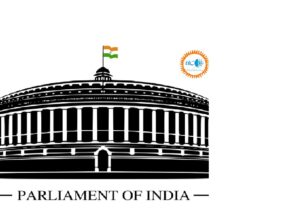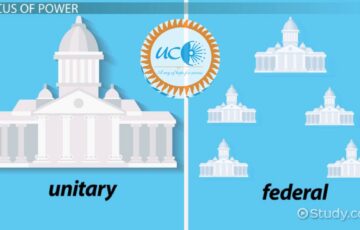Indian federalism is the middle point between Unitarianism and confederalism. Analyze.
Approach:
- Start by describing unitarianism and confederalism. Then enlist in tabular form aspects of Indian polity that exhibit unitarianism and aspects that exhibit confederalism-related features.
- Mention how Indian federalism is different from both.
- Conclude with summary.
Unitarianism is the feature of a State which is governed as a single entity by a dominant central government. Any sub-units of the state exercise only the powers that the central government chooses to delegate. On the other hand, confederalism is the feature of a State where the central authority is dominated by the sub-national units. In this model, the provincial governments are stronger than the centre. The units also have a right to secede from the Union.
Indian federalism has been variously described as quasi-federal, federal-in-form, unitary-in-spirit or bargaining federalism due to its unitary bias. At the same time, strongly federal features are also seen. A comparison between unitary and confederalism-related aspects of Indian federal scheme is as follows:
| Unitary features | Confederalism-related features |
| ● Single constitution and single citizenship. | ● Rigid constitutional arrangements create a dual polity with clearly prescribed powers for states under States list of 7th schedule.
|
| ● Relatively more important subjects under the Union list of Schedule 7; residuary power lies with the union.
● The states are bound by prevailing laws and directions issued by the centre (article 256). |
● Rajya Sabha provides an institutional arrangement to put check on the Union legislations.
● Supremacy of the constitution and independent judiciary limits the power of the centre.
|
| ● Parliament can create a new state by separating territory from any state, by merging states or parts of states. For example, the reorganisation of J&K in 2019. | ● A written constitution details mechanisms for upholding federalism and resolving federal disputes such as Inter-state council, Finance commission or SC’s original jurisdiction under article 131.
|
| ● Governor of a state is appointed and removed by the centre; single Election Commission of India, CAG, presence of All-India Services.
|
● Federalism has been recognised as a basic feature of the constitution by the Supreme court in SR Bommai Case.
|
| ● Provisions for national emergency (article 352) and President’s rule (article 356). |
Although the Indian federalism shows some of the features seen in unitarianism and confederalism, the nature of Indian polity is different from both:
- The states don’t have the right to secede from the Union, a right implied by confederalism.
- Rather than independence of units, the Indian federalism envisages interdependence through cooperative federalism.
Hence, it is apt to describe Indian federalism as the middle point between unitarianism and confederalism.









